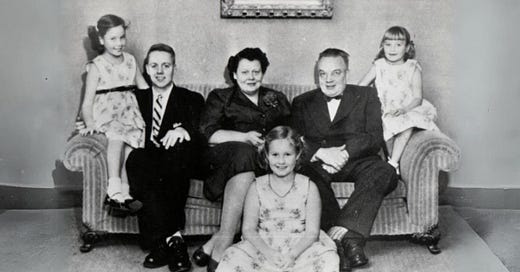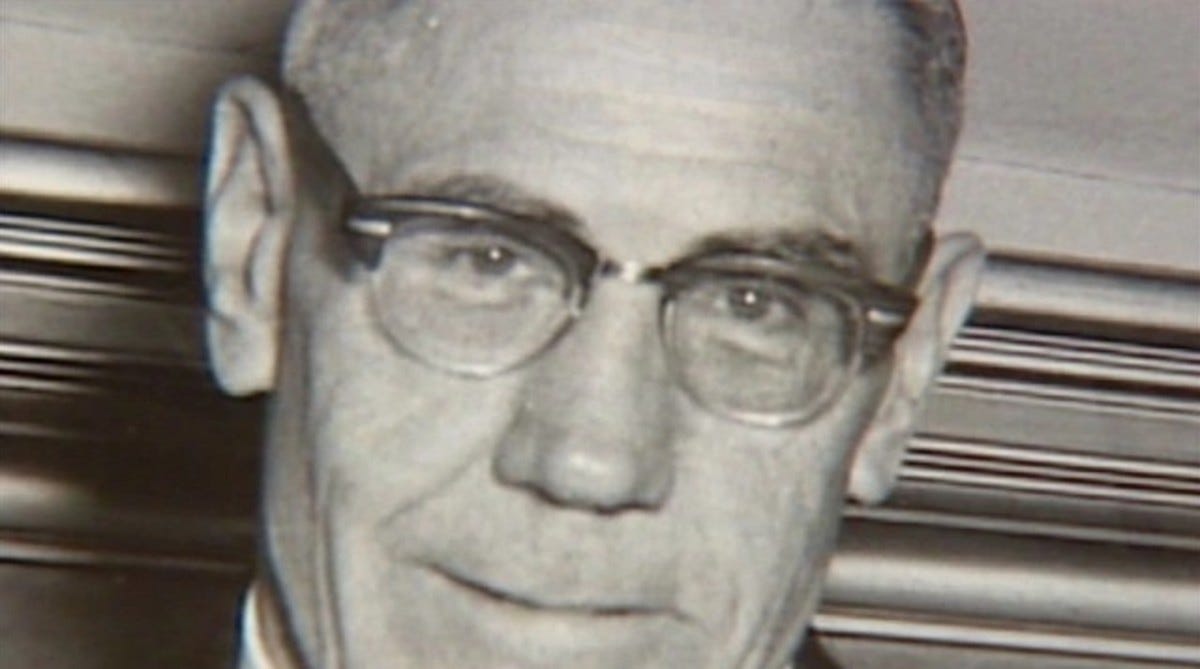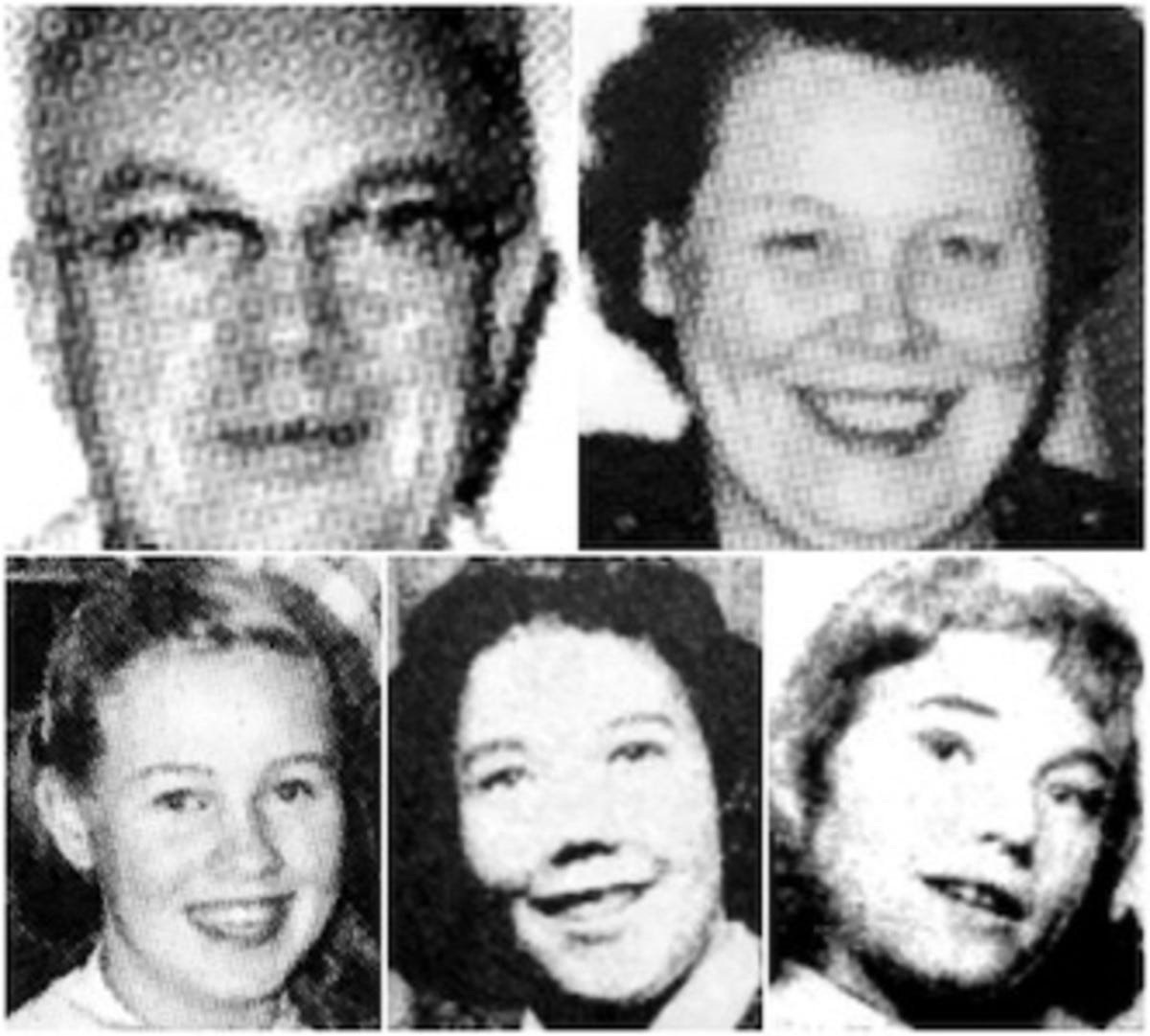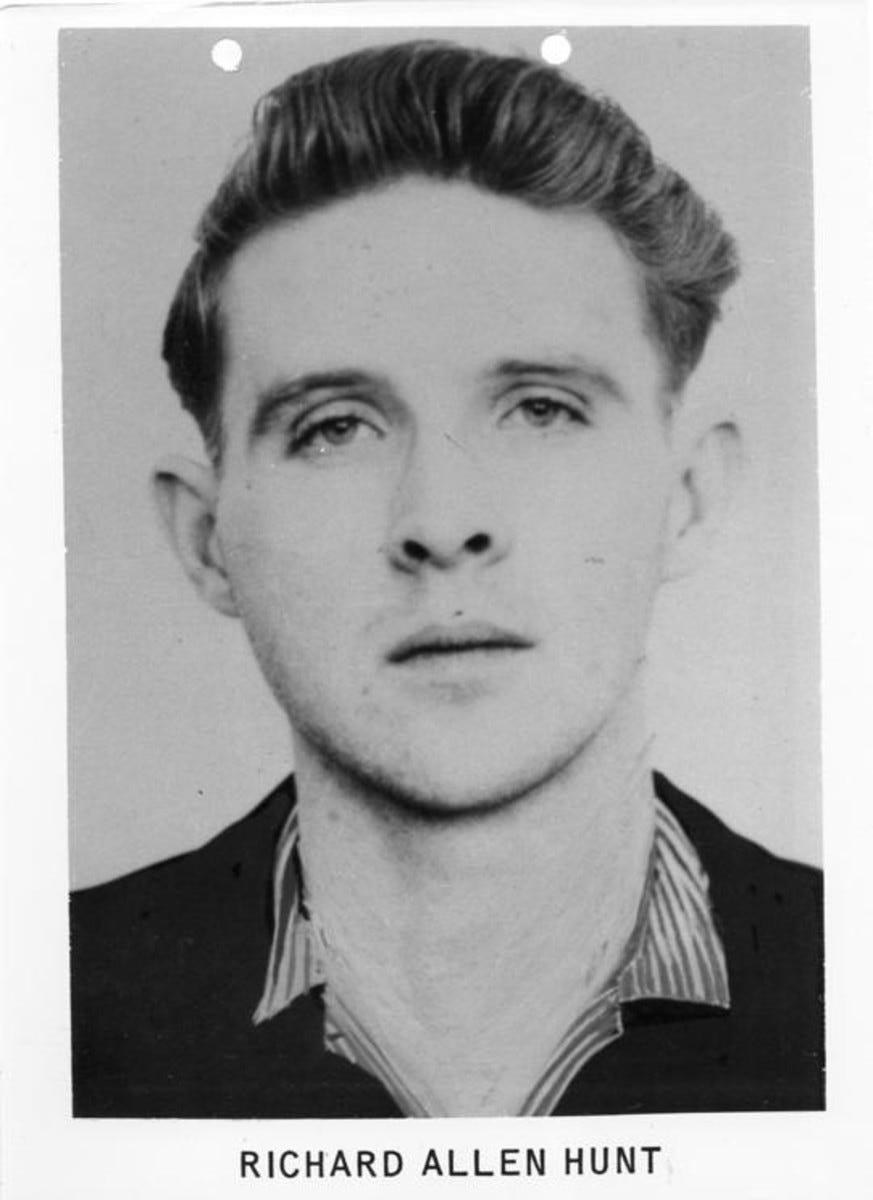The Martin Family Disappearance: Oregon's Most Baffling Cold Case
A convoluted unsolved case, with several theories and suspects connected to it
The Martin Family Disappearance
It's been nearly seventy years since the Martin family vanished from the Columbia River Gorge, but their disappearance remains one of the most controversial cold cases in the history of Portland, Oregon.
In 1958, the search for the Martins was the largest manhunt the state had ever attempted. But despite their efforts, as well as an abundance of suspects and clues, investigators never solved the case.
Who was the Martin family and how did they become one of Oregon's most baffling mysteries?
"Candy Lane"
Ensign Kenneth “Ken” Martin (born September 10th, 1904) and Barbara Aileen Cable (born in February 1910) were married on November 28th, 1929. In 1958, the couple had four children—Donald, Barbara ("Barbie"), Virginia, and Susan—who were aged 28, 14, 13, and 11, respectively.
The family lived in a two-story Tudor-style home in Portland, Oregon, where they were well-liked by neighbors and active in their community. The street on which the Martins lived was often referred to as “Candy Lane” during the Christmas season, as the family loved the holidays and enjoyed spreading Christmas cheer to their neighbors.
Ken Martin played Santa Claus each year for the neighborhood children and handed out homemade candy cane decorations.
The outgoing family was also known to organize summer talent contests, Kool-Aid stands, and parades.
Donald, their oldest child, was in the Navy and stationed in New York in 1958.
A Timeline of Their Last Day
On December 7th, 1958, Ken declined an invitation from their relatives—the Evans family—to come over for dinner that evening, stating that they already had plans for the day and needed to stick to them.
Trip to the Gorge
Ostensibly, their plan was to head out to the Columbia River Gorge for a day trip in their 1954 cream-and-red Ford Country Squire station wagon; while there, they would gather “greenery” to make Christmas wreaths and other decorations. Later, details would emerge indicating a far more serious matter that may have motivated this day trip.
Accounts vary as to exactly when the Martins left their home on the afternoon of December 7th.
Ella Chinn, who lived down the street, remembered seeing them leave at roughly 2 p.m., while Frank Womack, who was washing his car across the street, claimed it was closer to 1:30 p.m.
Clara York, a waitress at the Paradise Snack Bar in Hood River, said she waited on the family between 4 and 4:30 p.m. However, she later modified her story slightly, clarifying that they had come in around 2 p.m.
Nevertheless, her original story and timeline may have been more plausible because she remembered turning the floodlights on in the parking lot just after they left, as dusk fell.
The family also stopped for gas at the Cascade Locks service station, though reports differed as to when they arrived and who waited on them.
Bridge of the Gods
Kelsey and Doris Knutson claimed to have seen what looked like the Martins’ station wagon around dusk parked under the Bridge of the Gods in Cascade Locks. Two men were standing next to the vehicle and speaking to the passengers inside.
They were never seen alive again and what happened to the Martin family that day was, and remains, a mystery.
The Search
The next day, when Ken didn’t show up for work at Eccles Electric Home Service Company and all three of the girls were marked absent from school, their friends and family became concerned.
Ultimately, it was Ken’s boss who reported the family missing that evening and a search quickly ensued.
The Multnomah County and Hood River County police took charge of the investigation. Over the course of the following days and weeks, investigators gathered the aforementioned eyewitness reports and searched the area extensively, both on land and in the nearby Columbia River.
A Discovery in The Dalles
Despite the lack of evidence as to their whereabouts, many came to believe that they had accidentally driven into the river.
An amateur sleuth named Donald D. Bain made the most important discovery in the investigation when he found tire tracks leading to a cliff in The Dalles and cream-colored paint chips, consistent with the color of the Martin station wagon, on the rocks below.
The location of the tracks suggested that an accident was unlikely, as the spot was not close to the road.
Efforts to search this portion of the river in The Dalles proved fruitless when two police officers—Fred Pearce and Ard Pratt—shot down the idea, claiming it was too dangerous and that no divers should be sent there.
However, Detective Walter Graven was told by Lou Smith, Kenneth Dye, and other divers that this would be “a good place to dive and anyone who knows how to dive would have no trouble in this area.”
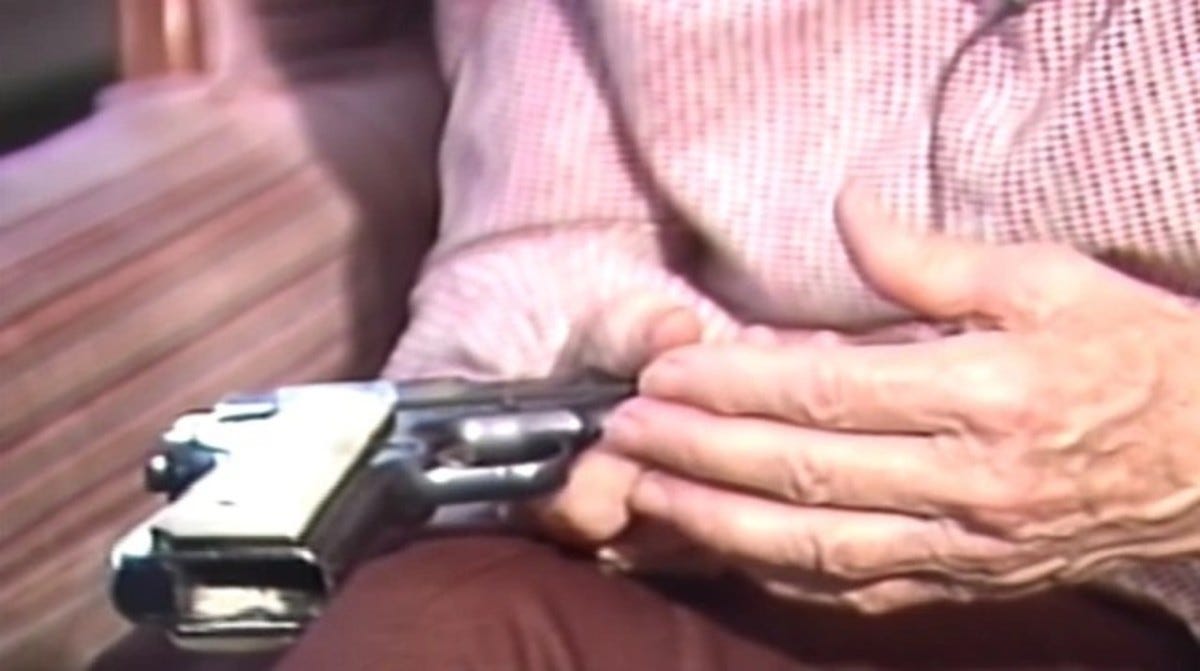
Susan and Virginia Are Found
On May 1st, 1959, a drilling rig’s anchor got hooked on a heavy object near The Dalles, but was unable to bring it to the surface after it became dislodged.
On May 2nd, Ellery Colby and his wife witnessed two bodies floating down the river while fishing near Cascade Locks. In the days that followed, both bodies were recovered and dental records confirmed their identities as 13-year-old Virginia Martin and 11-year-old Susan Martin.
Autopsies
Though the official cause of death for both girls was determined to be drowning, a technician reportedly spotted what he believed to be bullet wounds in each of their heads and informed Dr. Waterman, the medical examiner.
In his report, however, Waterman stated that no such injuries were found. Likewise, no police reports or newspaper articles from the time indicated that any signs of foul play were present.
The examination also revealed that both Virginia and Susan had eaten burgers and fries within two hours of their deaths, consistent with the testimony of waitress Clara York.
Traces of metal, including aluminum, were found on Susan’s clothing. Interestingly, an aluminum smelting plant was located directly across the street from where the drilling rig had encountered an obstructive object in the river.
Dr. Waterman claimed to have received several threatening phone calls after the bodies were discovered. Each time, the voice of what sounded like a young man warned Waterman that he would be harmed should any of the other missing Martins be identified.
Virginia and Susan would both be cremated and, for unknown reasons, their urns went unclaimed for a decade. The remains were finally claimed in 1969, but there is no record of who obtained them.
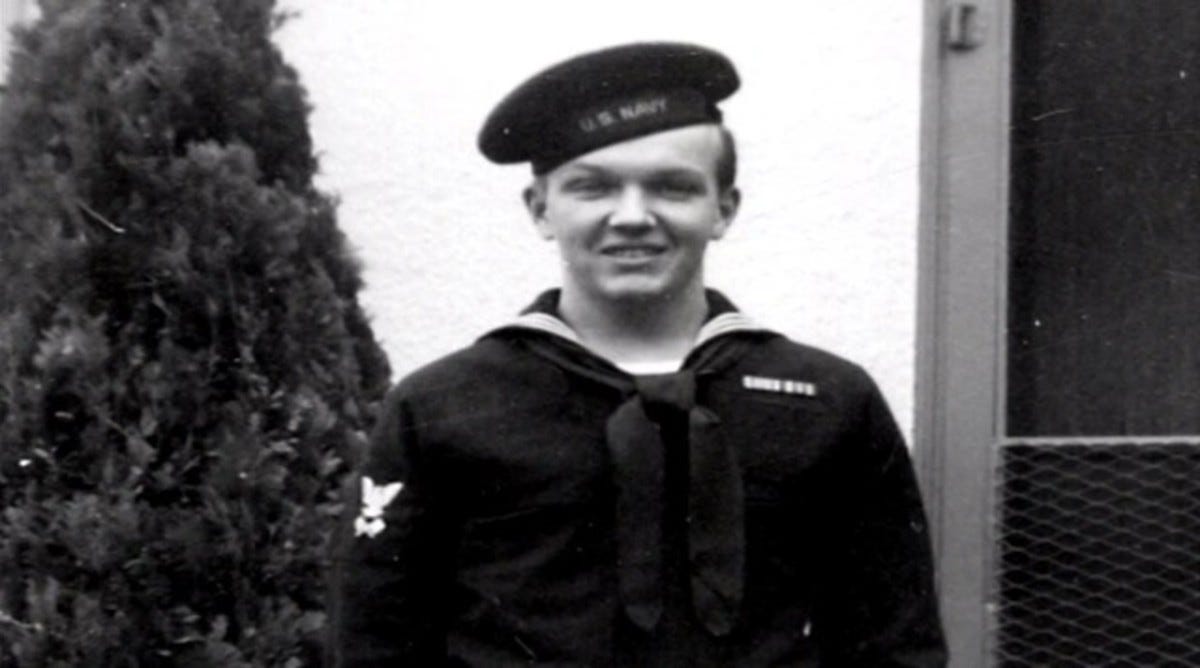
Donald Martin
Donald Martin, the only surviving member of the Martin family, was living in New York at the time his family went missing. Strangely, he never came out to aid in the search for his parents and sisters, claiming that his aunt Charlotte had encouraged him to stay put in New York. However, Charlotte refuted this claim, stating that she didn’t understand why Donald hadn’t traveled to Oregon to help look for his family.
Donald also didn’t attend the memorial services for either of his sisters, claiming to have gotten the dates mixed up.
As the only surviving family member, Donald was the sole beneficiary of the Martin estate, which included a $14,000 double indemnity life insurance policy, several other life insurance policies totaling $6,000, and $13,000 in savings.
All told, the estate was worth $36,000 (roughly equivalent to $372,000 today).
Detective's Suspicions
Detective Graven initially suspected Donald of having some involvement in the disappearance of his family. His suspicion grew after learning of Donald’s troubled past. Four years earlier, the young man had been fired from his job at Meier & Frank—a department store in Portland—for stealing over $2,000 worth of merchandise.
According to Graven’s report, Donald confessed to the thefts, explaining to his boss that he was going through a difficult time. Relations between himself and his parents, Donald continued, had become strained after he told them he was gay.
Allegedly, he also referred to his mother as a “fat slob” and asserted that his father was “not much better.” Additionally, he expressed concerns that his sisters would grow up to be just like them.
Graven’s report went on to say that Donald had been accused of stealing in New York as well and that he was currently seeing a psychiatrist in the city.
When he finally returned to Oregon in May, Donald told investigators that multiple important financial papers, such as income tax returns and a bank ledger book, were inexplicably missing from his father’s desk.
Red Herrings and Anomalies
The investigation was complicated by a sequence of red herrings and false leads.
A white 1951 Chevrolet was found abandoned in Hood River shortly after the family went missing. It was later determined that an ex-con named Lester Kenneth Price had stolen the vehicle from a friend in Venice, California, and driven it to Hood River.
A woman’s glove was also found near the abandoned Chevy, but it was determined that it didn’t belong to Barbara Martin.
The day after the Martins vanished, a black taxi was spotted parked outside of the family home at 7:20 a.m. It remained there for approximately one hour before leaving.
There were also a few anomalies that couldn't be explained.
The Receipt
The gas receipt that was supposedly signed by Ken Martin on December 7th, 1958, was later examined and compared with several other samples of his writing and determined to be a forgery, which begged the question: Was the family really at the gas station on the day? And if so, were they alone?
The Pistol
A .38 automatic pistol covered in blood was discovered under a rock near Cascade Locks in January 1959. A single spent bullet was found in the chamber of the gun. Bizarrely, the weapon was never processed as evidence and was later cleaned and returned to the man who found it.
When investigators traced the gun’s serial number, they learned it was among the items Donald Martin was accused of stealing from Meier & Frank back in 1954.
Detective Walter Graven
Detective Walter Graven was brought in to investigate a possible criminal angle to this case.
Based on his personal journals, Graven strongly believed that the family was murdered. However, when he attempted to prove his theory, he faced stiff resistance from the local police force.
In addition to being denied the right to have divers search the river below where the tracks were found, Sheriff Francis Lambert allegedly burned Graven's report right in front of him in 1959, telling him: “We both know it’s time to stop pursuing this case.”
Lester Price and Richard Hunt
Graven’s investigation turned up evidence that two ex-cons, Lester Kenneth Price and Roy Light—later learned to be an alias for Richard Allen Hunt—may have been involved in the disappearance of the Martin family.
Hunt and Price were seen in the Paradise Snack Bar on December 7th at the same time the Martins were having lunch there. They were also witnessed leaving at around the same time the family did.
Both vanished from the Hood River area shortly thereafter and apparently spent the next three days in a Dallesport, Washington, brothel owned by Clifford “Slim” Bennett, a Portland bootlegger.
Reports from the historical archives indicated that Oregon State Police and Multnomah County Sheriff Francis Lambert were connected to Bennett and had money tied up in his business ventures.
Who Was "Wayne"?
Though Donald had already confessed to stealing over $2,000 worth of merchandise from his workplace back in 1954—including a .38 automatic pistol—he later changed his story when speaking with Detective Graven:
“New York police told me about that gun being found. I have no knowledge of it. Wayne had a buddy who worked in sporting goods. Wayne liked guns. I didn’t.”
The question remained: Who was Wayne and how was he connected to the Martins?
Wayne—whose last name has never been released to the public—showed up frequently in Graven’s notes. He and Donald met in 1953 while Wayne was a student at Portland State University and Donald was still working at the department store. The two quickly became friends and then roommates.
In 2008, Wayne gave an interview in which he initially claimed that Donald’s parents had no idea that he was gay. He immediately contradicted this assertion with the following story:
“Donald had set up a situation with another gay person at home after Ken and Barbara were gone and the parents came back and caught Don in the act, so to speak … I think he wanted to expose—he wanted to open up the story of his life and didn’t know how to do it.”
The identity of the man with whom Donald was allegedly involved has never been revealed.
After discovering Donald's sexual orientation, Ken and Barbara sent Donald east to attend a Christian college in Connecticut, but he decided to join the Navy instead.
Wayne, who claimed to know the whole family “intimately,” remained close to the Martins and said that soon after the incident, Ken and Barbara came to him, asking why he never told them that Donald was gay, to which Wayne responded that he didn’t feel it was his place to expose that information.
Further details about Wayne: His father was a respected figure in Portland. While working as a physical education teacher at Cascade Locks High School in 1958, he also became acquainted with two young men whose names will sound familiar by this point: Lester Kenneth Price and Richard Allen Hunt.
Additionally, Wayne had become friends with a fellow football player while attending Portland State College. This friend was allegedly connected to organized crime and went on to become a cab driver.
The Lost Martin Family: Theories
Walter Graven’s notes made vague allusions to the person he believed was behind the disappearance of the Martin family.
Though he had suspected Donald in the early stages of his investigation, he came to believe that the Martin son had nothing to do with it.
In his journal, Graven wrote:
“With Donald eliminated, girls most likely motive so had to be a friend of Donald’s whom Ken Martin had found out about and was going to expose. Therefore, had to be a married man or one going to be married.”
Wayne, the friend who knew the Martin family “intimately,” was engaged at the time the Martins vanished and went on to marry a nurse the following spring. Is this the friend that Graven was referring to?
Barbie's Possible Pregnancy
Though no explicit reference to this theory survived in his journals, Graven’s family has stated that he believed 14-year-old Barbie had been pregnant when she went missing.
Seemingly supporting this theory was the fact that Barbie had seen a doctor in Vancouver, Washington, that fall instead of their family pediatrician. Also, according to Clara York, Barbie had wanted to order a burger and fries that day at the Paradise Snack Bar but was reprimanded by her mother who suggested that she order a tuna sandwich instead.
Had Ken and Barbara learned in late 1958 that their oldest daughter was pregnant? If so, who was the father? And was this possibly the motivation for going out that day? Perhaps they had agreed to meet with someone or wanted to confront this person.
Donald's Strange Christmas Card
In 1969, Donald mailed Detective Graven an odd Christmas card that resembled a ransom note, comprised of letters of various sizes, shapes and colors. It read: “Et ils sont descendu des collines et ils n’ont plus eu peur” (French for “And they came down from the hills and they were no longer afraid”).
Accompanying this cryptic message was a sketch—presumably drawn by Donald himself, as he was an artist—of a young man surrounded by three children (one of whom held a lamb), two sheep, and what appeared to be a cliff in the background. The drawing of one of the children bore a striking resemblance to a picture of Susan Martin holding a lamb.
What was Donald trying to convey with this card? One interpretation is that the three children, the two sheep, and the young man represented his sisters, his parents, and himself, respectively. The cliff in the background, combined with the message, might refer to his family disappearing into the river and imply that they’re now at peace.
Even if this interpretation is correct, whatever compelled him to send such a card remains a mystery.
This case haunted Walter Graven until his death in 1988. He firmly believed that it could be solved if only the station wagon and the other three Martins were located, but sadly, this never happened.
A Family of His Own
Donald went on to marry and have a family of his own, spending the rest of his life in Hawaii. He passed away in 2004. According to his children, he spoke very little about his family or their disappearance. They have also declined to speak publicly about the case.
“There are chapters of this family’s history that we do not discuss,” said his youngest daughter Sarah.
Richard Allen Hunt was eventually placed on the FBI’s “Ten Most Wanted List”—the 14th person to make the list since its creation in 1950—for unrelated charges of robbery, assault, and check forgery. He was ultimately arrested in Wyoming and waived his right to a trial before a grand jury.
He was sentenced to life in prison in 1959 after being convicted of an assault with intent to kill charge. This sentence was later vacated when it was deemed to be too severe a punishment for the crime committed. He was given a new sentence of 14 years but was released in 1968.
It’s unclear what the reasoning behind his early release was or what became of either Hunt or Price in the years which followed.
Interest in the Martin family mystery periodically flared up in the following years, most notably when iconic journalist Ann Sullivan wrote the in-depth article “What Really Happened to the Martins?” about the investigation in 1967.
Sadly, these renewed efforts at solving the case yielded no new developments. The disappearance of the Martin family, and the events leading up to it, remain a mystery.
If you would like to support my work and make a donation: PayPal

